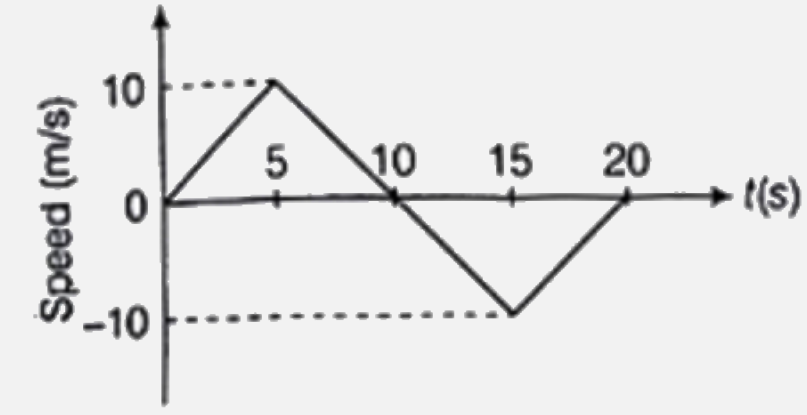Statement I: Graph (1) represent one dimensional motion of a particle. While graph (2) can not represent 1-D motion of the particle. (here x is position and t is time)
Statement II: Particle can have only one position at an instant
The correct Answer is:A
To solve the question, we need to analyze the two statements and the graphs provided.
Step 1: Understand the Statements
- Statement I: Graph (1) represents one-dimensional motion of a particle, while graph (2) cannot represent one-dimensional motion.
- Statement II: A particle can have only one position at an instant.
Step 2: Analyze Graph (1)
- In graph (1), for each time (t), there is a unique position (x). This means that at any given time, the particle is at one specific location. This satisfies the condition for one-dimensional motion, where a particle can only occupy one position at a specific time.
Step 3: Analyze Graph (2)
- In graph (2), for the same time (t), there are two different positions (x1 and x2). This indicates that at that instant, the particle is at two different locations. This violates the principle of one-dimensional motion, which states that a particle cannot be in two places at the same time.
Step 4: Conclusion on Statements
- Since graph (1) adheres to the rules of one-dimensional motion and graph (2) does not, we can conclude that:
- Statement I is true.
- Statement II is also true, as it correctly states that a particle can only occupy one position at any given instant.
Step 5: Determine the Relationship Between the Statements
- Statement II provides a valid reason for Statement I. The fact that a particle can only occupy one position at a time explains why graph (1) represents one-dimensional motion while graph (2) does not.
Final Conclusion
- Both statements are true, and Statement II is the correct explanation for Statement I.
Summary of the Solution
1. Graph (1) shows one position for each time, confirming one-dimensional motion.
2. Graph (2) shows multiple positions for the same time, violating one-dimensional motion.
3. Therefore, both statements are true, and Statement II explains Statement I.
- Statement I: Graph (1) represents one-dimensional motion of a particle, while graph (2) cannot represent one-dimensional motion.
- Statement II: A particle can have only one position at an instant.
- In graph (1), for each time (t), there is a unique position (x). This means that at any given time, the particle is at one specific location. This satisfies the condition for one-dimensional motion, where a particle can only occupy one position at a specific time.
- In graph (2), for the same time (t), there are two different positions (x1 and x2). This indicates that at that instant, the particle is at two different locations. This violates the principle of one-dimensional motion, which states that a particle cannot be in two places at the same time.
- Since graph (1) adheres to the rules of one-dimensional motion and graph (2) does not, we can conclude that:
- Statement I is true.
- Statement II is also true, as it correctly states that a particle can only occupy one position at any given instant.
- Statement II provides a valid reason for Statement I. The fact that a particle can only occupy one position at a time explains why graph (1) represents one-dimensional motion while graph (2) does not.
- Both statements are true, and Statement II is the correct explanation for Statement I.
1. Graph (1) shows one position for each time, confirming one-dimensional motion.
2. Graph (2) shows multiple positions for the same time, violating one-dimensional motion.
3. Therefore, both statements are true, and Statement II explains Statement I.
Topper's Solved these Questions
- MOTION IN A PALNEBOOK - ALLENCHAPTER - MOTION IN A PALNEEXERCISE - SOLVED EXAMPLE
28 Videos
- MOTION IN A PALNEBOOK - ALLENCHAPTER - MOTION IN A PALNEEXERCISE - EXERCISE-2
170 Videos
- KINEMATICS-2DBOOK - ALLENCHAPTER - KINEMATICS-2DEXERCISE - Exercise (O-2)
46 Videos
- NEWTON'S LAWS OF MOTION & FRICTIONBOOK - ALLENCHAPTER - NEWTON'S LAWS OF MOTION & FRICTIONEXERCISE - EXERCISE (JA)
4 Videos
Similar Questions
Knowledge Check
Which of the following graphs cannot possibly represent one dimensional motion of a particle?
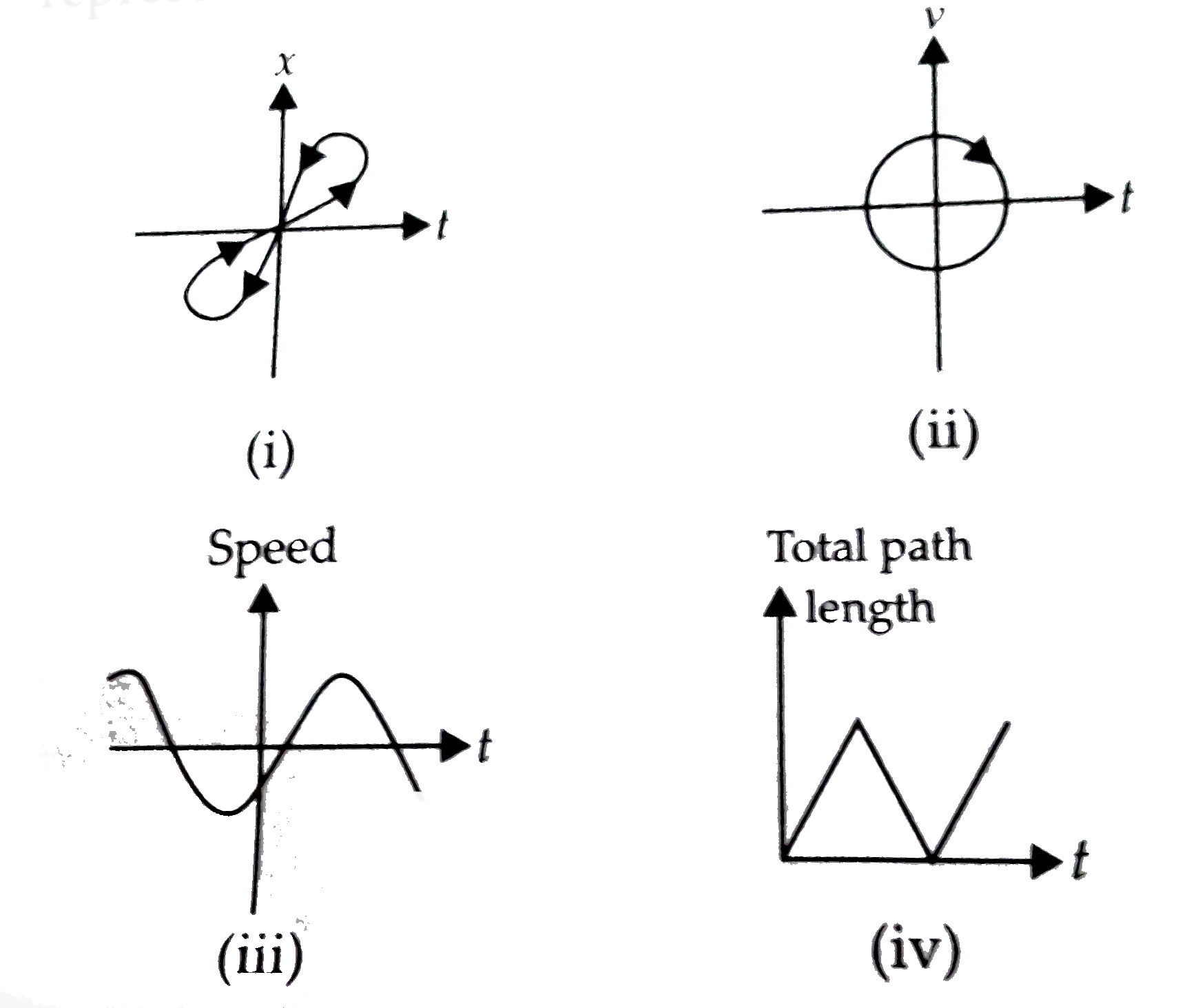 A(i) and (ii)B(ii) and (iii)C(i), (ii) and (iii)DAll four
A(i) and (ii)B(ii) and (iii)C(i), (ii) and (iii)DAll four
The simple harmonic motion of a particle is given by x = a sin 2πt . Then, the location of the particle from its mean position at a time 1/8th of second is
View SolutionWhich of the following graphs cannot possibly represent one dimensional motion of a particle?

View SolutionState with reasons why the graph in the adjacent figure cannot represent one-dimensional motion of a particle.
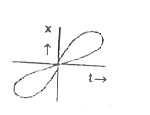
View SolutionWhich of the following graphs represents the motion of a particle moving with constant velocity?
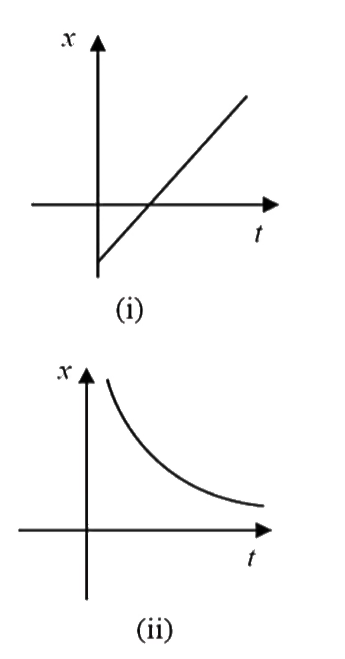
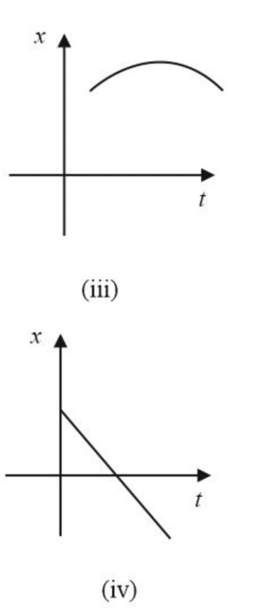
View SolutionPosition time graph of a particle of mass 2 kg is shown in figrure. Total work done on the particle from t=0 to t=4s is

View SolutionWhich of the following pairs of graphs does not represent the motion of he same particle in the same interval (curves are parabollic):−
View SolutionThe displacement x of a particle in a straight line motion is given by x=1−t−t2. The correct representation of the motion is
View Solution

